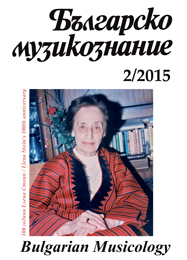
We kindly inform you that, as long as the subject affiliation of our 300.000+ articles is in progress, you might get unsufficient or no results on your third level or second level search. In this case, please broaden your search criteria.

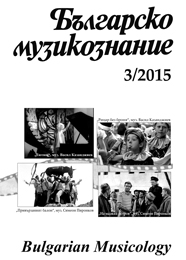
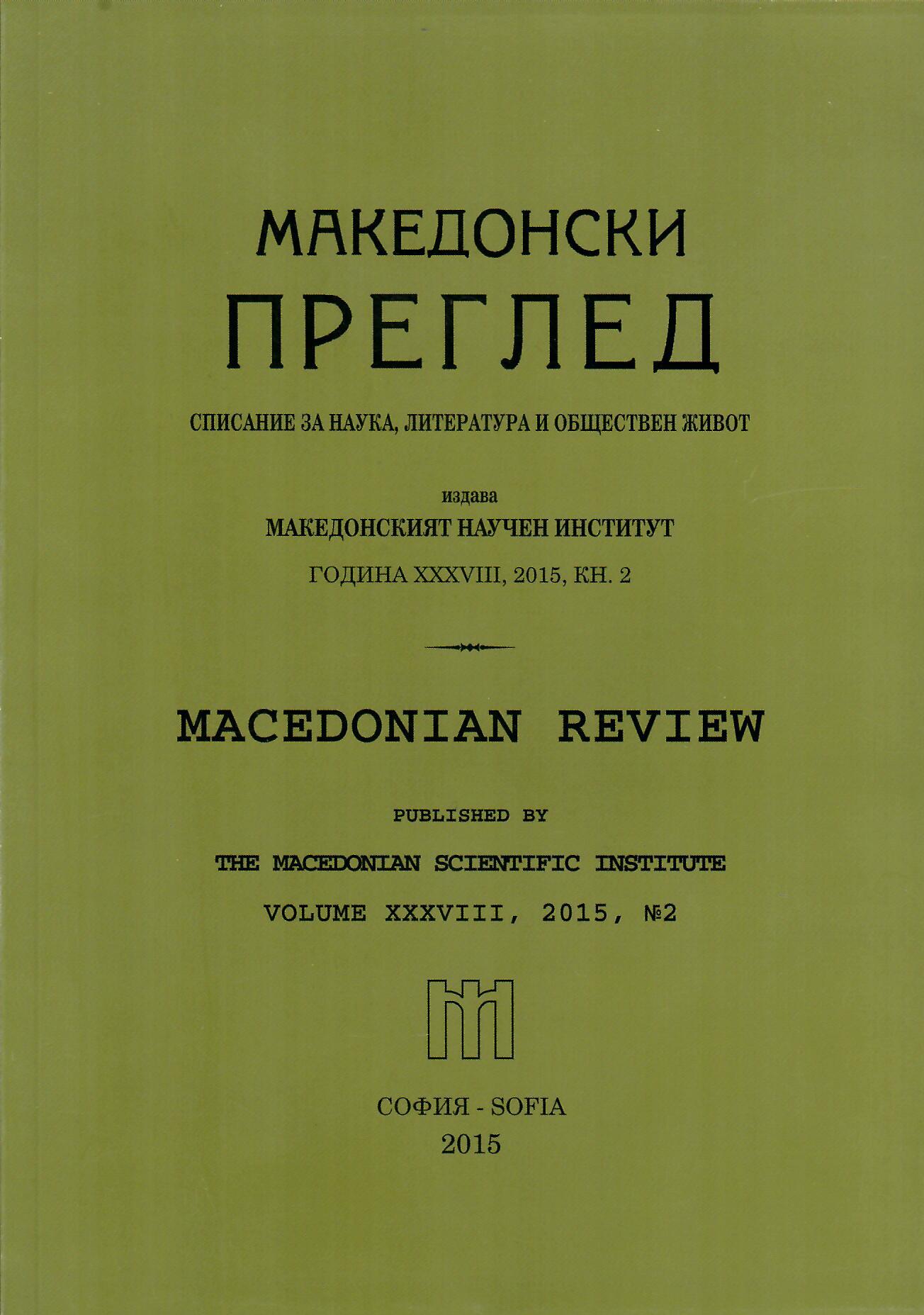
The study traces the aspects of literacy of Bulgarian population in Macedonia in the system of the late Ottoman Empire (1879–1912) on the basis of an unknown Statistics (1909) from the archives of the Bulgarian Exarchate.
More...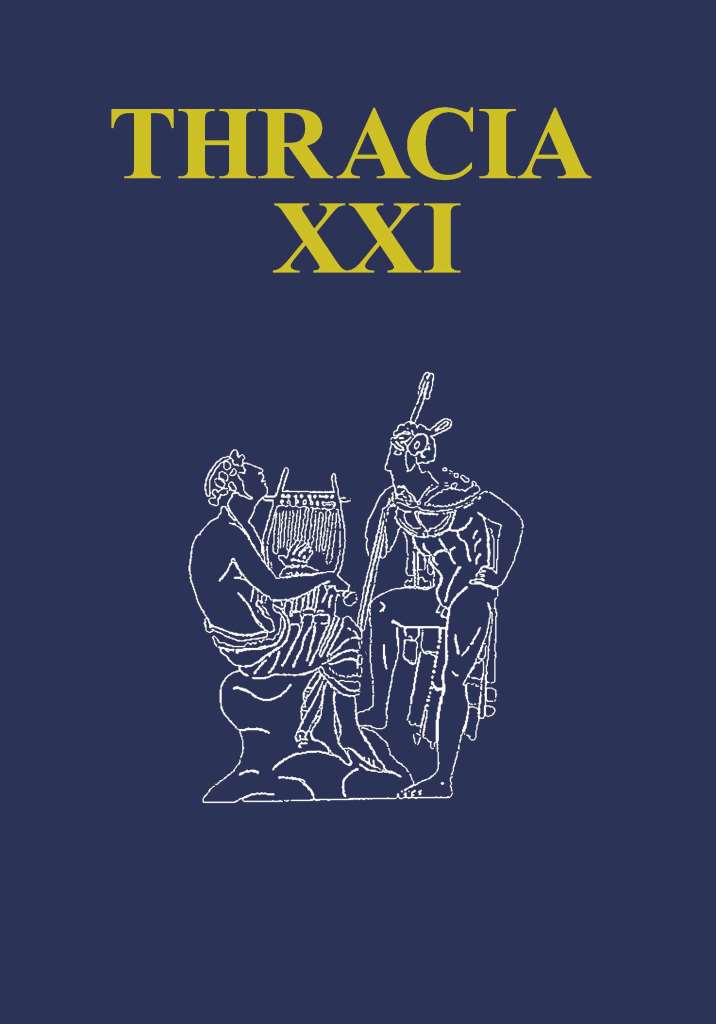
The present article treats the issue of the participation of Thracian mercenaries in the army of Cyrus the Younger. The author has studied all references in Xenophon’s Anabasis, pertaining to the participation of Thracians in the March of the “Ten Thousand”. All that was happening within the context of the inter-dynastic conflict between Artaxerxes II and his brother Cyrus the Younger. The author has also studied the activities of the Spartan military leader and mercenary in the army of Cyrus, Clearchus. Clearchus recruited Thracians for the army of the Persian claimant to the throne at the Thracian Chersonesos and north of that area. An attempt has been made to give a tribal identification of the Thracians taking part in those events. In the battle at Cunaxa on 3 September 401 BC the Thracian troops also took an active part. The author has also studied the main points in the retreat of the “ten thousand” Hellenes and representatives of the Thracian ethnic group from Mesopotamia to the Bosporus, and has analysed coin finds from Northeastern Thrace, comprising Persian coins which might be connected to those events, interpreting them as remuneration for Thracian mercenaries in the army of Cyrus the Younger. The author has made reference to the activity of the Spartan military leader Derkylidas in Western Asia Minor as well.
More...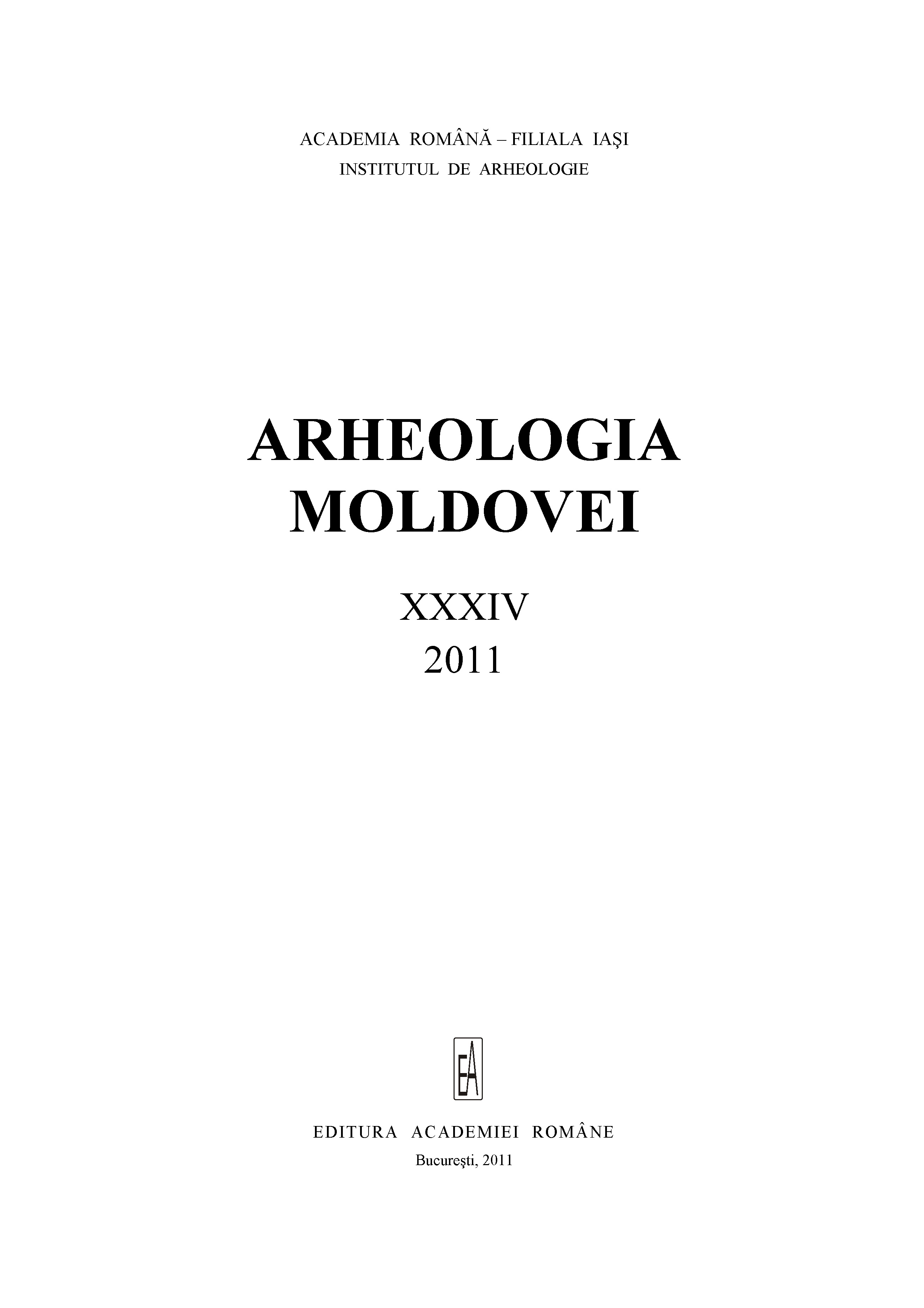
On the border of the Topliţa – Izvorul Mureşului Depression in the Carpathian Mountains in the northern part of it (the only investigated until now), on several mountain pathways that descend or climb from this depression to Transylvania or Moldavia many monumental stones have been discovered. These megalithic blocks of stones with signs and symbols we can find on Teasc Mountain, a high area located on the northeastern side of the Giurgeu Massive, areas from where start several pathways between Bistriţa and Călimani Mountains to the north, nearby Ceahlău Mountain to the east and Gurghiu Mountain to the west and south. Through these pathways go the main national routes that connect east west and south. On the mountain ridges, there are pathways to the north. On most of these pathways, big blocks of stones with signs and symbols have been discovered.On such big stones, several signs and symbols have been find on the Teasc Mountain. So, at the beginning of 20 centuries, 11 such stones have been discovered here and recently other 28 ones, and the investigation is not yet concluded. Primary has spread the idea of „runes”* that persist for a while, disprove by G. Bakó. On the height of several mountains there are megalithic stones with signs from different historic periods related with astronomy (as those from Gura Haitii, Teasc – Grueţu) or hermits, and in the last case, the signs has to be interpretateas marking directions, routes, locating (such as the megalith at Colţ etc.).At Remetea, in the churchyard, a big stone (1 × 0.60 × 0.50 m) was bringing without marking its place and original position. The stone has over 15 incised signs and symbols. These sorts of signs we can find on the Teasc Mountain (located on the north) and on several pathways that climb on the height of the mountains to the east and west. Sometimes the signs indicate directions (Remetea, Gălăuţaş – Toloşeni stream, Teasc Mountain – La Grueţu, ValeaStrâmbă) other times human activities (Preluca Mountain – Vârful Feţii/Face Pick, Piciorul Măştii hamlet; Gălăuţaş, Topliţa – Tarniţa Valley). On some stones, we find signs of invocation for the divine protection (orant), or the initials I(isus) H(ristos), some other times early Medieval or modern ligatures I (isus) H (ristos) T (heos) (Cotârgaşi). Some persons have written their names in relation with memories, love memories (Topliţa – Măgheruş Valley, Poiana lui Filip, Teasc– stone no. 29), or names related with occupation … on sheep/Oi, P (ăcurar) V (iorel or Vasile), or Shepherd /Păstor Ion Coşarcă 1974… (Teasc Mountain, stones no. 18, 30).
More...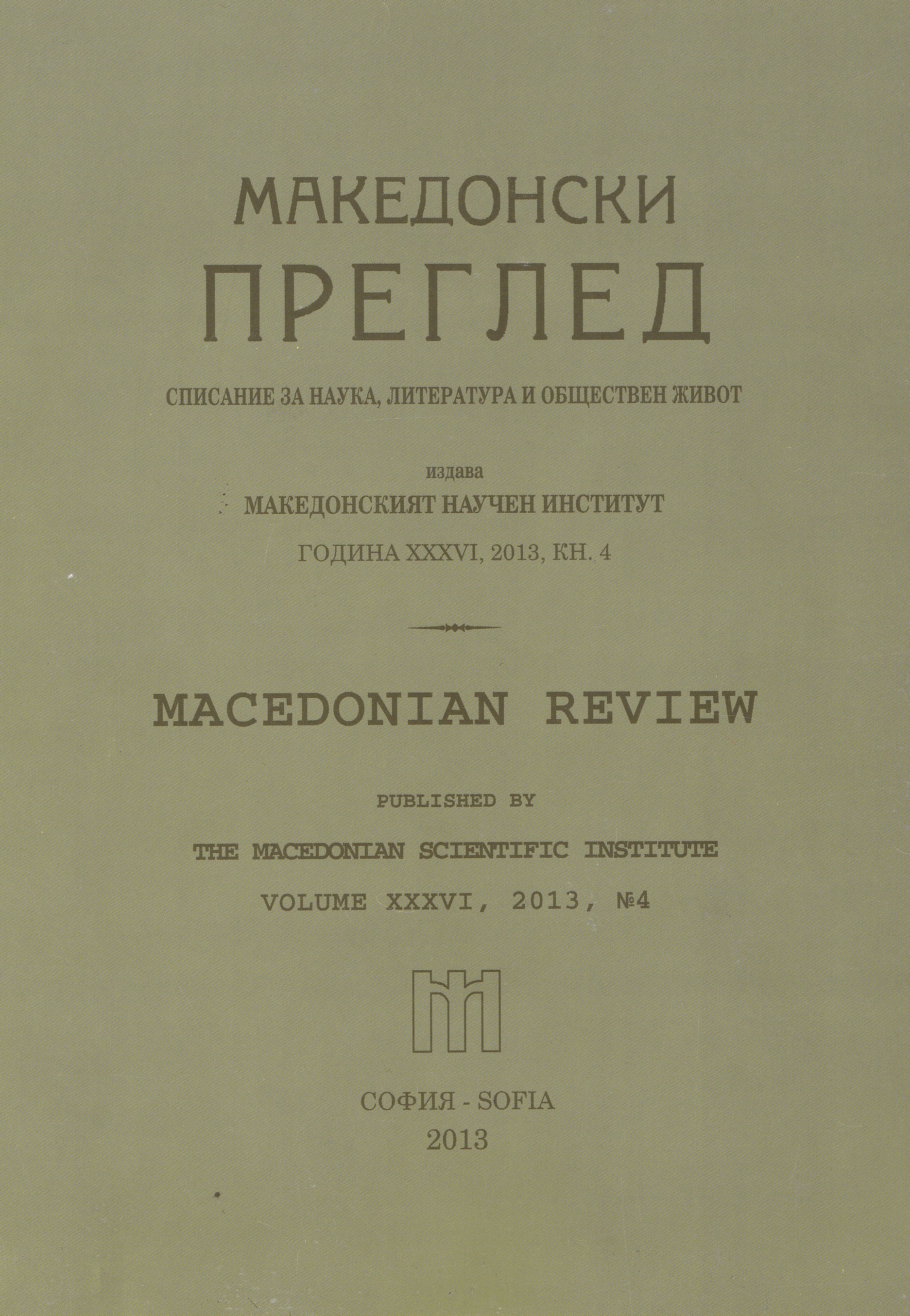
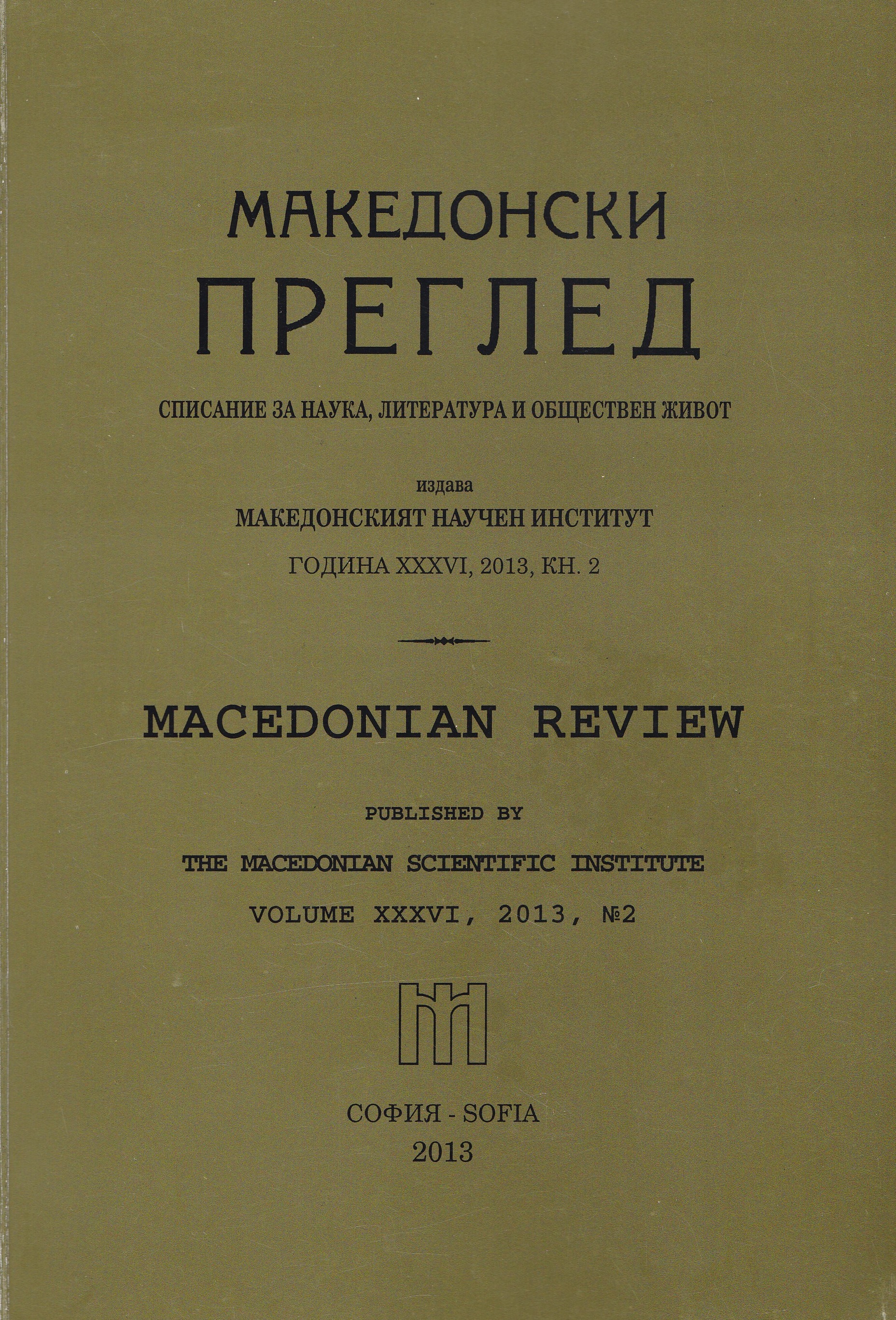
The article presents the life and work of one of the most prominent Bulgarian linguists - Academician Lyubomir Miletich.
More...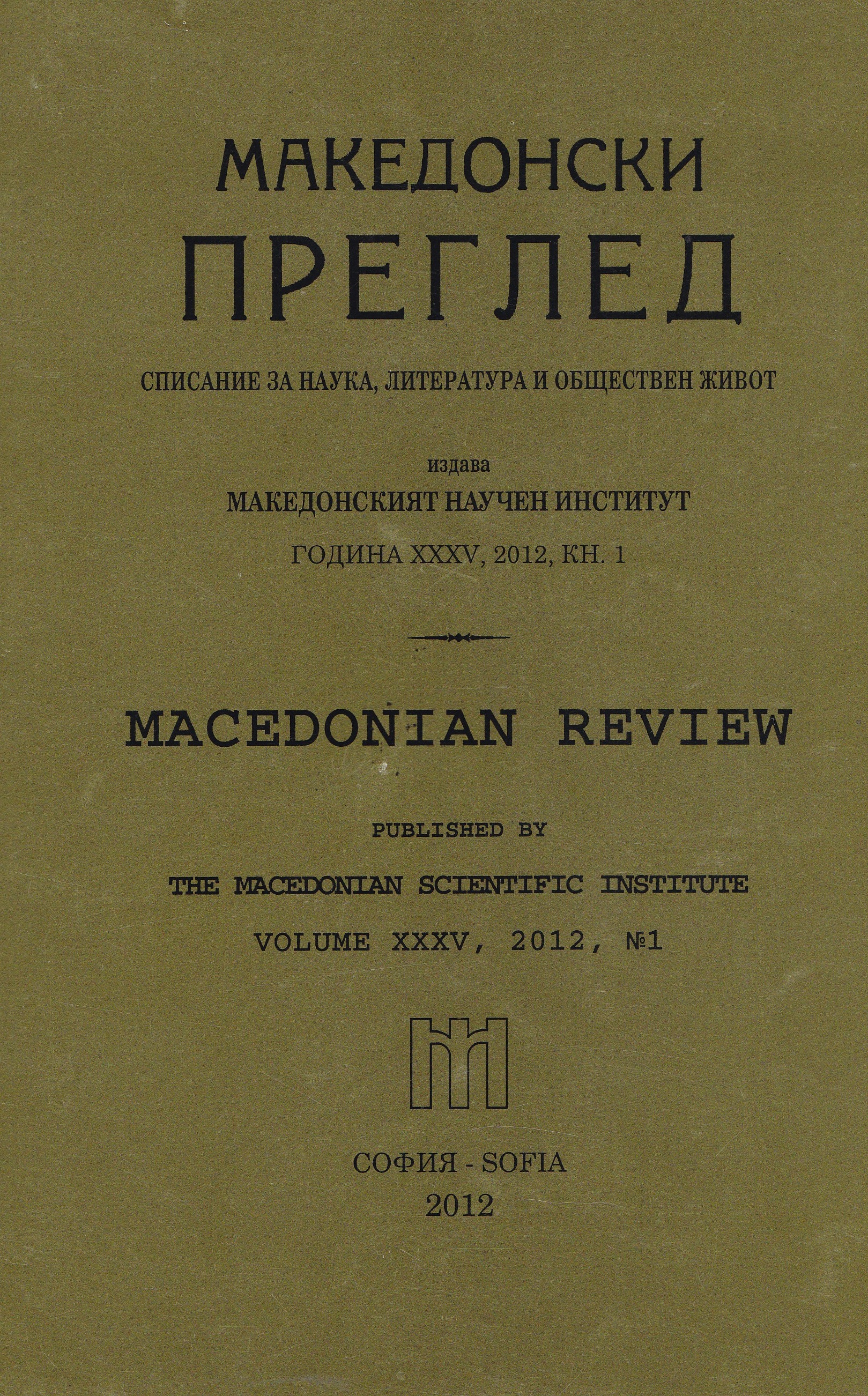

The excavations carried out by the present authors in the Getic cemeteries at Boroseşti (Iaşi County) and Poieneşti (Vaslui County), dated to the 5th – 3rd c. BC, brought new data concerning funerary practices typical for this period; they consist mainly in the alternative use of inhumation and cremation during prolonged burial practices. Our starting point was the discovery of two funerary structures having the shape and dimensions of inhumation graves as well as grave goods, but lacking bones (at Boroseşti); at the same time were found graves with cremated bones laid in similarly over dimensioned pits, i.e. pits which had the sizes of inhumation graves (at Boroseşti, and especially at Poieneşti). This phenomenon is widely distributed, from Dniester (Nistru, Dnestr) to Tisza (Tisa) River; it is most clearly attested in the cemeteries from Slobozia-Oneşti, Stelnica, Zimnicea, Fântânele, Teliţa, Murighiol, Băiţa, Olteni(Romania), Dănceni and Pîrjolteni (Moldovian Republic), Szentes-Vekerzug and Tápiószele (Hungary). In these authors opinion, the large grave pits served initially as „provisional graves”; after some time, the corpses were exhumed and cremated, the cremated bones being afterwards either laid back in the initial pits or put in other places. When the latter was the case, in the former „provisional graves” – considered by some authors „cenotaphs” –, one can find remains of grave goods, but no bones. The outfit of the funerary structures with wood, stone and clay (e.g. at Dănceni, Zimnicea, Olteni, etc.) shows that they were accessible for the duration of the prolonged funerary practices, thus allowing for repeated ceremonies and ritual acts to take place at/in the graves. The existence of biritual, prolongued funerary practices is also attested by the ethnography of indigenous populations, both recent and contemporary.
More...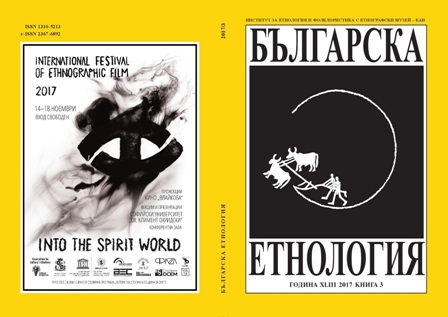
The article is focused on a very interesting pottery vessel called “podnitsa“ (flat earthen baking dish). On its surface it is written the year of its producing, 1866. The aim of the research is to publish the artefact, to study the rare rite connected to it, to describe the date and its deposition in the pit. The presence of an ornate pot, called podnitsa, marked with a specific year, as well as of other similar dishes without decoration bears record of a preserved old tradition of fertility and harvesting or of reminiscence of one practiced by a limited group of people (several families or a family) which is not a subject of mass tendency. This would probably mean that the personal life cycle of the people who created the podnitsa is deeply marked by sensitive events culminating perhaps on May 1, 1866, on the day of the Jeremiah holiday. The material projection of these processes is a ceramic vessel whose features characterize it as the only one studied so far. This artefact as well as the large set of findings during the archaeological excavations at the site in the region of the village of Velikan add a yet-unknown nuance to the ritual of the Jeremiah feast.
More...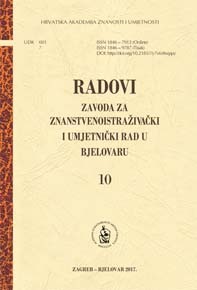
In the paper, the author gives data on religious conversions from the Orthodox to the Greek-Catholic and the Roman-Catholic religions in the area of the Bjelovar Archdeaconry. Following introductory remarks on the attitude of the Kingdom of Yugoslavia and the Serbian Orthodox Church towards the Roman-Catholic Church, the author gives data on the sufferings of the Serbs and their coercive emigration from the Bjelovar area in 1941. The central part of the text analyses statistical data on religious conversions from the Orthodox to the Roman-Catholic religion between 1941 and 1945, collected from the Archdiocesan Archives in Zagreb, and includes examples of these religious conversions. A special chapter tackles religious conversions from the Orthodox to the Greek-Catholic religion. No accurate data exist about the number of religious conversions. Nevertheless, 2,235 submitted applications in correlation with the number of Orthodox inhabitants witness to the frequency thereof.
More...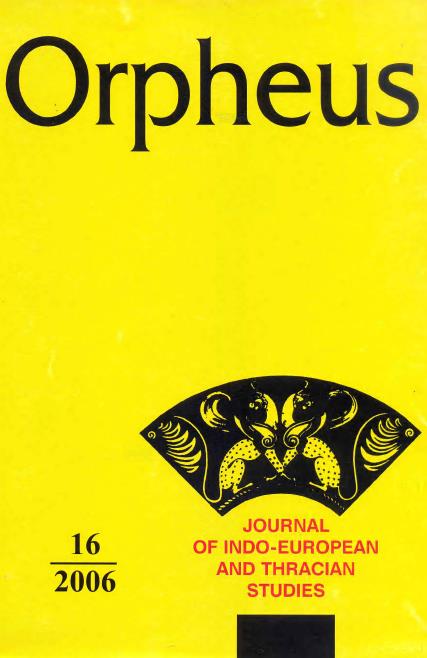
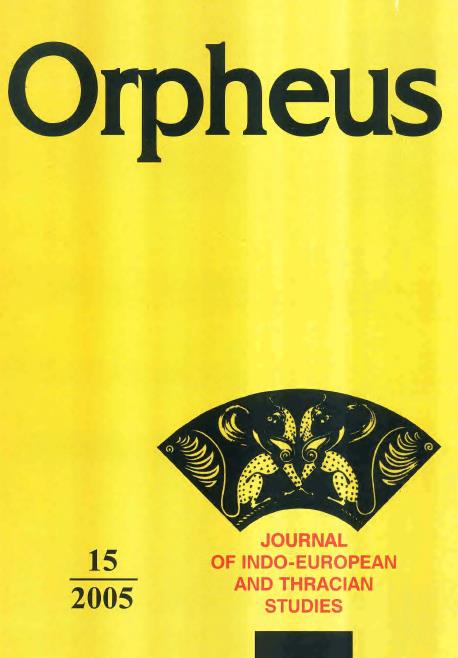
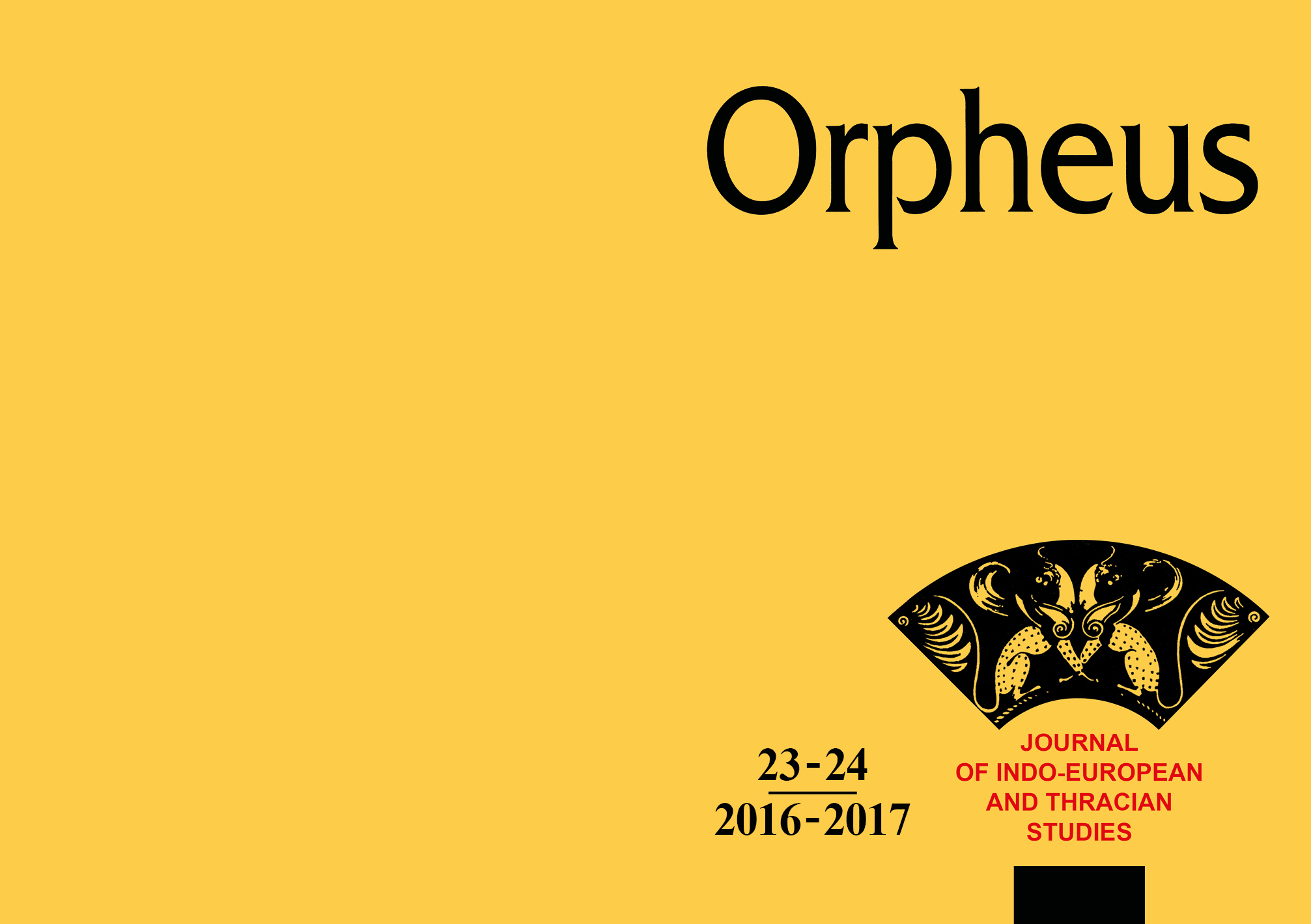
The paper turns again to the well-known and extensively commented narrative by Herodotus about the faith of the Getae in their immortality, about the anthropodaimon Zalmoxis and about the periodic dispatching of a messenger to him. Attention is focused on the link between that evidence and the information in Herodotus about the killing of the beloved widow over the grave of the deceased husband among the Thracians who dwelled above the Crestonaeans, as well as with the statement by Stephanus Byzantius about a similar practice among the Getae. The evidence is analysed in the light of the universal historical phenomenon of following into death when someone is killed so as to follow someone else in the World Beyond. The analysis gives grounds to believe that traces of the ritual known as following into death in its institutional form are concealed behind the intricate story about the god/ man Zalmoxis, his cult among the Getae and their beliefs. Among the Getae it was of a markedly religious character, based on the strong faith in the supernatural/ divine existence of the dead in the World Beyond, in their influence on and direct interference in the course of life in this world and a clearly manifested cult of the ancestors.
More...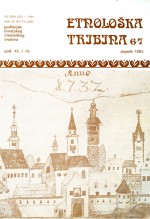
The crucial year of 1848 and the abolishment of feudalism did not bring much improvement to the peasant of Istria since the colon relations continued. Ethnographic descriptions written after that year mostly had the purpose of supporting the governing class, and proving that the Slav population, which was the most numerous, did not have any ethnographic distinctions and thus should naturally assimilate to Italian culture. The major proponent of such ideas was Carlo Combi. Some of his views were incorporated also in later publications. The travelogues of French and Austrian authors from that period are somewhat more objective when they present ethnographic data. They exist, however, only for the period before the Italian occupation, while after World War I only descriptions by Italian authors become available. At the end of the 19th century, Josip Ptašinski tried to start the publication of »The Ethnography of the Slavic People in Istria« and to establish an ethnographic museum, but with no success. Several Croatian authors collected data on culture, but a very small part of their manuscripts was published. Their work also ceased during the Italian occupation; for instance, it was forbidden to Jakov Mikac to carry out any ethnographic research. During the Second World War, Istrian villages were destroyed,. and so was the material ethnographic evidence and sources. After the War, the ethnographic research has not been properly organized, so that even today we do not have enough data gathered for an ethnographic presentation of Istria.
More...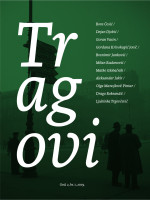
U tekstu se obrađuje obilježavanje stogodišnjice stvaranja Jugoslavije 1918 — 2018. godine. Iako je naglasak na hrvatskim medijima i javnosti, društvu i historiografiji, u tekstu se govori i o načinu na koji se o Jugoslaviji govorilo u Sloveniji, Bosni i Hercegovini, Srbiji, Crnoj Gori i Makedoniji. Pritom je u svim državnim politikama bivših jugoslavenskih republika moguće primijetiti zajednička obilježja, ali i određene specifičnosti u njihovom sadašnjem odnosu prema Jugoslaviji. Stvaranje Jugoslavije i jugoslavensko iskustvo naime u cjelini uvelike doživljavaju “prijelomnim” i “sudbonosnim”, uz dominiranje negativnog bilanciranja i nerijetko postavljanja pitanja je li se ono uopće moralo dogoditi. No i tijekom stogodišnjice bila su o tome vidljiva vrlo različita i suprotstavljena mišljenja, kako među povjesničarima tako i u medijima i javnosti, čineći temu Jugoslavije i dalje polemičnom i interpretativno otvorenom.
More...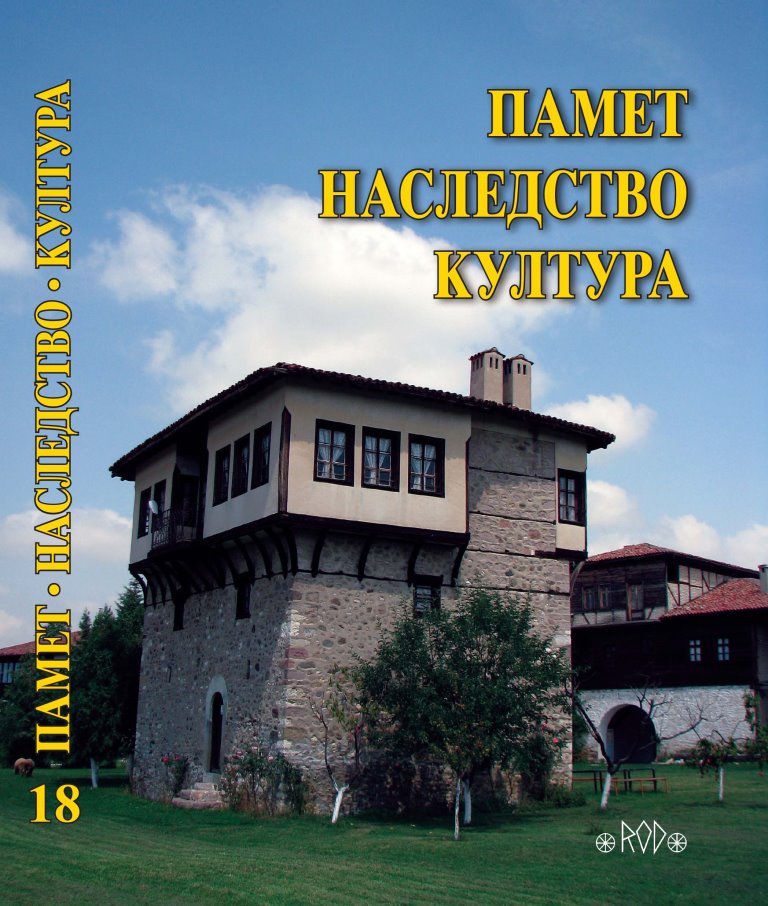
In this paper we will handle the late antique fortresses that are present on the territory of Kratovo. Kratovo as a self-governing municipality consists of 31 villages. In general, villages can be divided into mountainous and lowlands. The exact number of fortresses can not be reliably established. This conclusion was obtained due to the fact that systematic archaeological research was not carried out in this region, and the initial information for a greater number of fortresses was obtained from the reconnoitations in the middle of the last century, performed on this territory. About the number of fortresses from late antiquity in Kratovo, it can be said that there are about 26, with the possibility of increasing this number. As one of the most well-known and best explored fortresses from the late antique period in the Kratovo region are: Veliko Gradiste locality in the village Konjuh, the Kula-Zdravej Kamen in the village of Schlegovo, the site Gradiste in the village of Sakulica, and the locality Vidim in the village of Kuklica. The most representative fortress of these 4 was the fortress in the village of Konjuh, which has a continuity of living from prehistoric times to the Middle Ages, and it has experienced its flowering in the Roman and Late Antique times. By the way, this site is well researched, ie, there have been systematic archaeological researches since 1998. Our goal is to make a list of all the foundations of Late Antiquity and military and neighborhoods, which are not so famous. In the Large number of represented fortresses in this region is related to two key things, i.e. with the ancient roads and ancient mining.
More...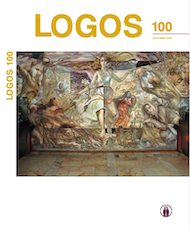
The article discusses modern patterns of expressing wishes which are transformations of ancient pagan rituals. With the adoption of Christianity, these models and, above all, their form, such as wishes, undergo changes under the influence of biblical symbols. The main attention is paid to the relationship between the functions of non-verbal and verbal semiotics in the rituals of wishes in the mythological, religious-Christian and secularised worldviews. In addition, the point that the ritual is a set of consecutive ritual actions is supported. An attempt is also made to reveal the inner form of wishes through the prism of the theory of gift-exchange. The characteristics of external and internal pragmatics of the remnants of an ancient ritual is represented in wishes as cultural etiquette forms of gift-exchange or, as is customary to say in modern discourse studies, forms of politeness. The need for experimental studies of different ethnocultures aiming at the remains of ancient rituals in modern consciousness is substantiated.
More...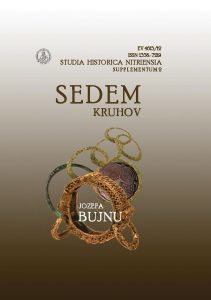
Na sklonku doby kamennej sa populácie sídliace v západnom vnútrokarpatskom priestore (zhruba územie dnešného Slovenska) dostali do kultúrneho kontaktu s východným eurázijským svetom. Štúdia analyzuje rozsah eurázijského kultúrneho prúdenia a jeho prejav na sledovanom území. Nositelia nových civilizačných ohlasov z východu sa prezentovali ako výnimočná inokrajinná kultúrna zložka, symbolizovaná svojským výzdobným dekórom (šnúrový ornament), aplikovaným na keramike miestnych kultúr od mladšej doby kamennej až po mladšiu dobu bronzovú. Šnúrová identita tak pretrvala v prehistorickom kultúrnom vývoji severozápadného vnútrokarpatského teritória takmer celé jedno tisícročie.
More...
The Lower Gran region accommodates a large number of polycultural sites from different historical periods, many of which we know only thanks to surface collections. In 2009, research was carried out for scientific and documentary purposes in the village Hronovce, part of Čajakovo, site Rúbaniská (Levice District). On the site were represented prehistoric (Stone Age, Bronze Age) as well as protohistoric finds (Roman period). The article refers to the protohistoric period, when a Germanic necropolis was located there from the end of the Early Roman period (stage B2, B2/C1). Three funeral urns were examined and many small artefacts (fibulae, buckles, weapons, belt components...) and fragments of undecorated and decorated pottery with various designs (barbotino, stamped decoration, toothed wheels, etc.) were discovered. The studied site in Hronovce confirms the intensive settlement of the Lower Gran region by the Quadi in the 2nd century AD, or more precisely at the time of the Marcomannic wars.
More...